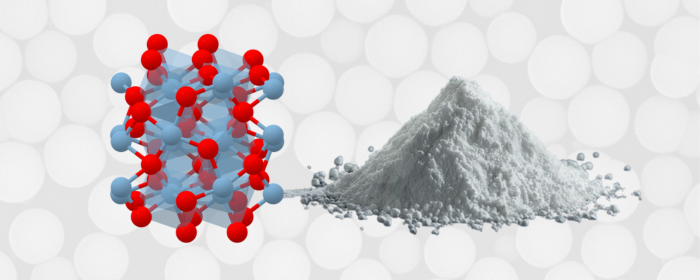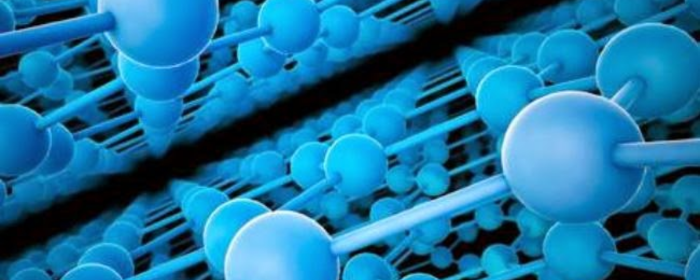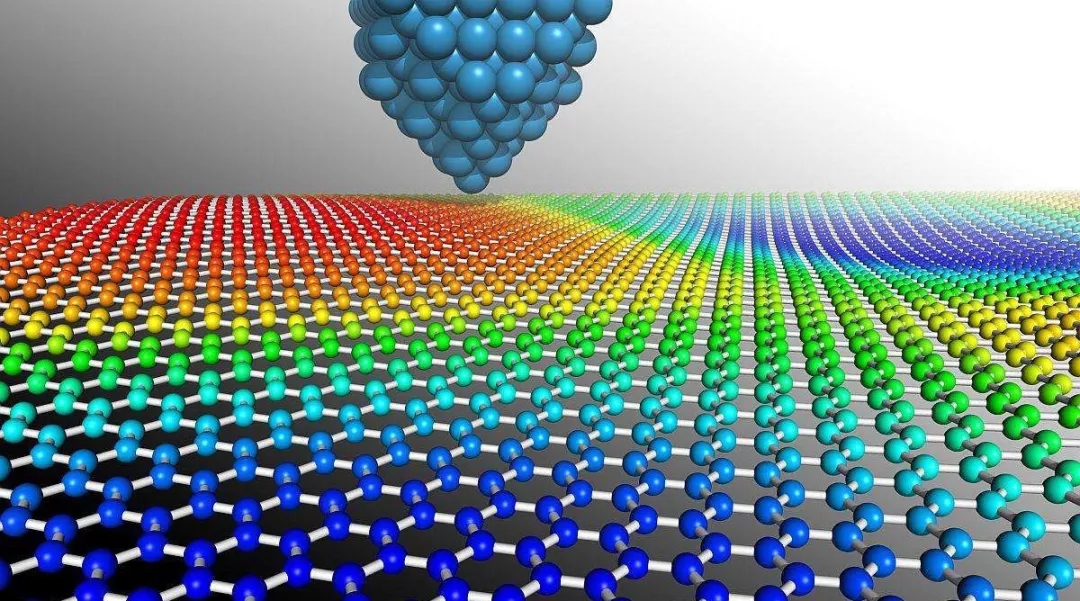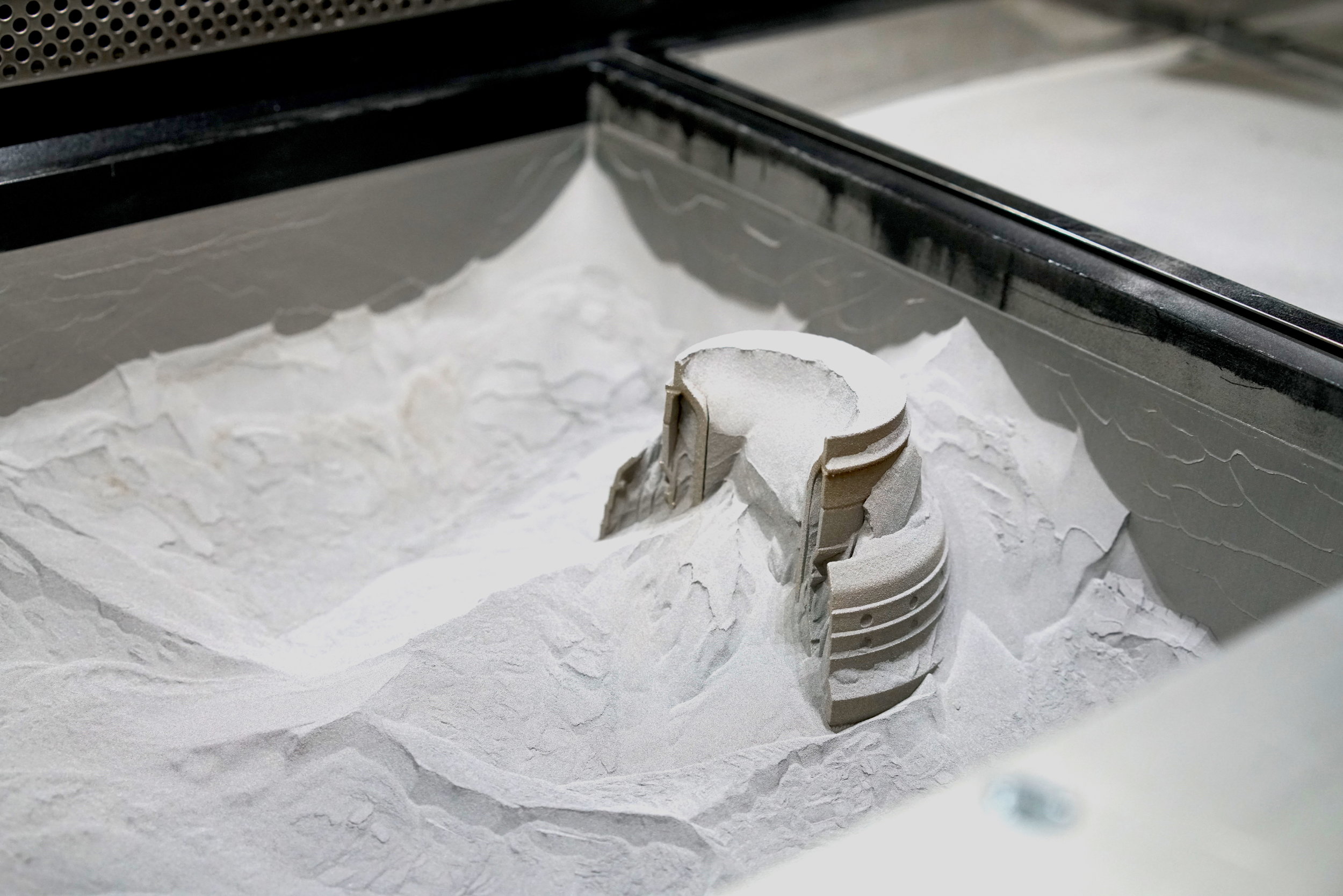

High Entropy Alloys (HEAs) are a light of potential in the inventive landscape of modern materials research, revolutionizing how we approach alloy design and application. High Entropy Alloy Powder, a vital component that supports HEAs' unique characteristics and adaptability, is at the heart of this revolution. This article discusses HEAs, studying their composition, properties, and the wide range of uses they provide across industries.
High Entropy Alloys (HEAs) are advanced metallic materials composed of 5 or more principal elements, each at near-equimolar ratios. This complex mixture results in a high entropy of mixing, which significantly influences the alloy's structure and properties.
HEAs commonly incorporate elements like Iron (Fe), Chromium (Cr), Nickel (Ni), Cobalt (Co), and Aluminum (Al), among others. The specific combination of elements is tailored to achieve desired properties for various applications.
The term 'high entropy' refers to the high configurational entropy achieved by mixing multiple principal elements. This entropy stabilizes the solid solution phase, inhibiting the formation of intermetallic compounds and thus enhancing the alloy's performance. The concept of HEAs was introduced in the early 21st century, marking a departure from traditional alloy design focused on one or two principal elements. The discovery opened new pathways in materials science, challenging conventional wisdom and setting the stage for a new era of alloy research.
HEAs are distinguished by their remarkable strength, durability, and resistance to corrosion and wear. Unlike traditional alloys, the equimolar or near-equimolar concentration of elements in HEAs leads to a unique microstructure, offering unparalleled mechanical and chemical properties.
Powder metallurgy plays a vital role in HEA development, allowing for the precise control of composition and microstructure. This method facilitates the uniform distribution of elements, resulting in alloys with superior properties.
The current research on the properties of high-entropy alloys is mainly summarized in three points: breaking through the strength-ductility balance; breaking through the performance limits of traditional materials; and breaking through the balance between physical properties and mechanical properties.
Higher strength and better plasticity are the eternal quest for structural materials. However, the strength and plasticity of alloys seem to be a contradiction. Alloys with high strength tend to lack plasticity and vice versa. The core idea of high-entropy alloys is to stabilize the chemically disordered solid solution phase by increasing the conformational entropy of the alloy, inhibit the formation of ordered intermetallic compounds competing with it, and form single-phase solid solution alloys with high strength and good plasticity. Recent studies have shown that high entropy alloys have the advantage of breaking the "strength-plasticity" law of traditional alloys due to their novel and unique composition design concepts. Figure 1 shows the comparison of strength and ductility between traditional alloys and high-entropy alloys, and it can be seen that compared with traditional alloys, high-entropy alloys have good ductility while maintaining high strength, and have the potential to break the balance between strength and ductility of traditional alloys.
High entropy alloys can break through the performance limits of traditional materials due to their thermodynamic, kinetic, and structural specialties, including low-temperature plasticity, thermal stability, and irradiation resistance. The demand for low-temperature plastic materials in space exploration, low-temperature storage, nuclear reactors, and other fields is becoming more and more urgent, while the plasticity of traditional materials generally decreases with the lowering of temperature, the special design concept of high-entropy alloys has the potential to break through the limit of the performance of traditional materials and gives people hope in the field of low-temperature high plasticity.
In general, conventional materials often fail to provide good performance under extreme conditions, e.g. poor electrical conductivity of alloys while maintaining high hardness is a problem faced by conventional materials. The emergence of high entropy alloys has the potential to break the balance between the physical and mechanical properties of conventional materials. Using first-principles calculations, the researchers found that CoCrFeNiMn high-entropy alloys have a low layer misfit energy, which is the key to inducing twins, and a high density of twinned boundaries enables the alloys to maintain a high degree of hardness while having high electrical conductivity.
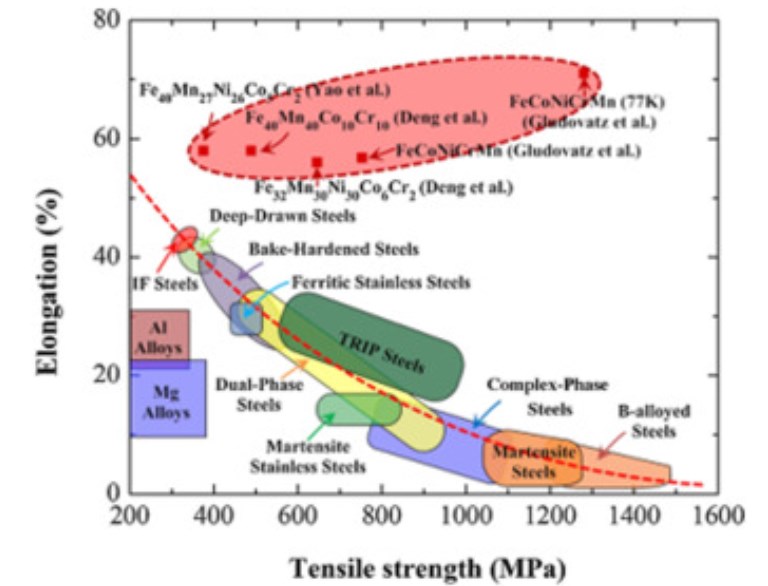
HEAs have broad application prospects in many fields, including aerospace, national defense and military, automobile manufacturing, nuclear energy, medical treatment, and so on. In the field of aerospace, high-entropy alloys can be used to manufacture aircraft engine blades, high-temperature parts of aircraft, etc.; in the field of national defense and military, they can be used to manufacture missiles and other military weapons; in the field of nuclear energy, they can be used to manufacture nuclear reactors. Here we briefly present 2 applications.
Compared with traditional corrosion-resistant materials such as stainless steel, copper alloys, aluminum alloys, titanium alloys, etc., high entropy alloys have the advantages of high toughness, high abrasion resistance, strong magnetism, etc., and stronger comprehensive performance. Corrosion-resistant high-entropy alloys can be used as the main materials for marine engineering and marine equipment in the direction of ship construction, offshore platform construction, and so on. For example, eutectic high entropy alloy can be used for propellers of ships, high-strength corrosion-resistant high entropy alloy can be used as special parts and components materials of ships, corrosion-resistant soft magnetic high entropy alloy can be used as magnetic materials in offshore wind power generating equipment, and corrosion-resistant high entropy alloy coatings can be used in the shells of ships. At the same time, the development of the industry on corrosion-resistant materials is also more and more high requirements, such as petrochemical, aviation, aerospace materials need to be in long-term contact with strong acid and other extreme environments, high strength corrosion-resistant high entropy alloy can be used as a special material to withstand extremely high load and avoid corrosion damage; corrosion-resistant soft magnetic high entropy alloy can be used for solenoid valves in the key magnetic materials; high entropy alloys with excellent corrosion resistance can be used in the field of petrochemical pipeline materials. piping materials in the petrochemical industry.

Biomedical metals are mostly used in the manufacture of various medical devices and surgical tools in orthopedics, dentistry, interventional stents, and other medical fields. Bio-medical high-entropy alloys can be used in orthopedic implants and vascular interventions due to their advantages of high strength, high hardness, high abrasion and corrosion resistance, low modulus of elasticity, and good biocompatibility. In addition, high entropy alloys are expected to gain a foothold in the antimicrobial alloy market due to their excellent overall performance. Antimicrobial high-entropy alloys can be widely used in equipment piping and storage tanks and other facilities in kitchenware, home appliances, the food industry, medical devices, beer, milk, pharmaceuticals, and other enterprises.
In conclusion, High Entropy Alloys (HEAs) represent a breakthrough approach to materials research, providing unparalleled advantages above standard alloys. Because of their unique multi-element compositions, HEAs have higher strength, ductility, and resistance to wear and corrosion. Their many uses in important areas like aerospace, defense, and biomedicine demonstrate their ability to drive technological advancement. As research progresses, HEAs promise to open up new possibilities in material design, pushing the boundaries of engineering and production.
Stanford Advanced Materials (SAM) is dedicated to providing best-in-class atomized metal alloy powders to customers in the commercial and industrial sectors. SAM excels in providing high-entropy alloy powders at high purity and competitive prices.
1. How are high-entropy alloys made?
High-entropy alloys (HEAs) are made by mixing five or more metal elements in nearly equal proportions using methods like arc melting, mechanical alloying (ball milling), or additive manufacturing (3D printing), and then solidifying or sintering them to form a homogeneous solid solution.
2. How do alloys differ from high-entropy alloys?
Traditional alloys are founded on one or two principal metals (for example, steel has iron), while HEAs consist of five or more principal elements in near-equal concentrations, leading to superior properties like high strength, thermal stability, and corrosion resistance due to their high configurational entropy.
3. Are high-entropy alloys magnetic?
A few HEAs are magnetic, e.g., FeCoNi-based alloys, while others, like CrMnFeCoNi, are non-magnetic; magnetism depends on composition and can be tuned by adjusting transition metal content (Fe, Co, Ni).
4. What are the applications of high-entropy alloys in aerospace?
HEAs are applied in aerospace in lightweight, high-strength applications like turbine blades, heat-resistant coatings for hypersonic applications, and radiation-shielding materials due to their excellent thermal stability, mechanical performance, and corrosion resistance.

